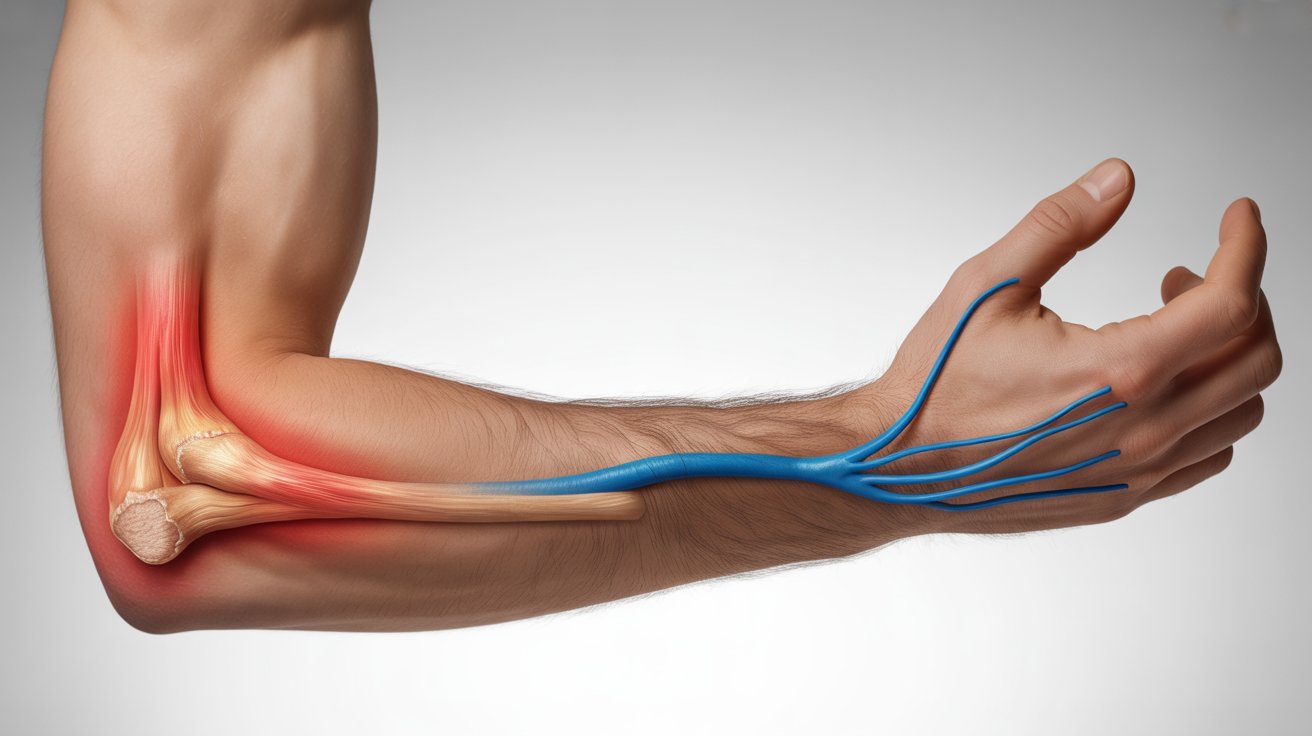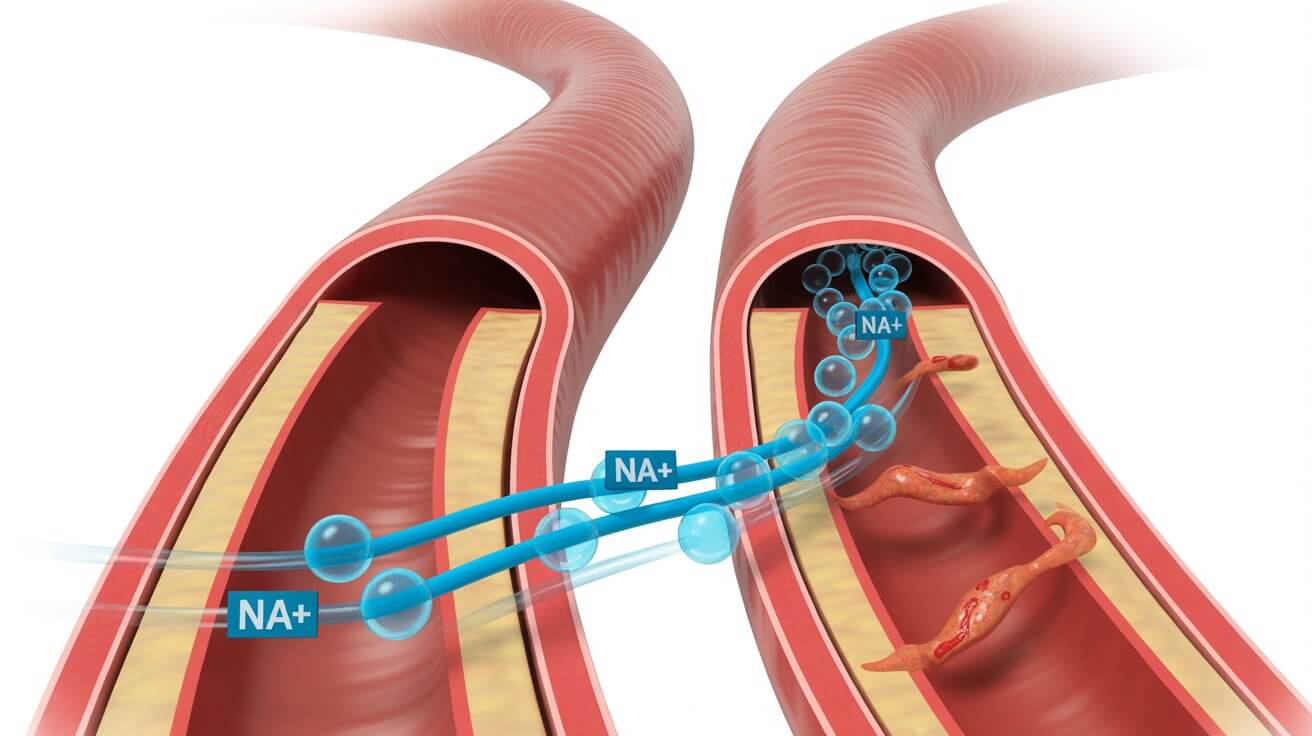Elbow pain can be surprisingly disruptive—especially when you’re trying to figure out whether it’s tendonitis or nerve compression. These two common conditions often feel similar at first, making it difficult to know what’s actually causing the discomfort. If simple tasks like typing, lifting a mug, or turning a doorknob suddenly spark pain, understanding where the pain comes from is the first step toward meaningful relief.
This guide breaks down the key differences between tendon-related pain and nerve-related symptoms, what to watch for, how each condition behaves, and when it’s time to talk to a healthcare professional.
What Makes Elbow Pain So Hard to Diagnose?
The elbow is a compact and busy joint. Tendons, nerves, ligaments, and muscles all pass through tight spaces, which means irritation in one area can easily “spill over” and feel like something else.
Why symptoms overlap
- Tendonitis tends to cause aching, burning, or localized pain along the inner or outer elbow.
- Nerve compression creates tingling, numbness, or “electric” sensations that may travel down the arm.
But because tendons and nerves sit close together, some people feel a mix: aching from irritated tendons along with fingertip tingling caused by nerve pressure.
Common daily triggers
The same activities can irritate both structures:
- Long periods of typing or mouse use
- Gripping tools or carrying heavy bags
- Lifting weights with poor wrist form
- Holding a phone with the elbow bent
- Repetitive wrist movements (scrolling, cooking, childcare)
Over time, these movements create micro-stress that leads to tendon overload or nerve irritation.
More Helpful Reads You Might Like:
What Is Tendonitis in the Elbow?
Tendonitis happens when the tendons around the elbow develop small microtears from overuse. Two common forms are:
Lateral epicondylitis (Tennis Elbow)
Pain on the outer elbow, often from repetitive wrist extension.
Medial epicondylitis (Golfer’s Elbow)
Pain on the inner elbow, often from repetitive gripping or wrist flexion.
Signs that suggest tendonitis
People with elbow tendonitis often describe:
- A deep ache or burning along the inner or outer elbow
- Pain that sharpens during gripping or lifting
- Weakness when shaking hands, opening jars, or holding a pan
- Discomfort that is easy to pinpoint with a fingertip
- Pain that worsens during or after activity and improves with rest
Everyday movements that make tendonitis worse
- Using a mouse for long periods
- Hammering or using tools
- Lifting weights without proper wrist alignment
- Repetitive typing or texting
- Carrying heavy grocery bags in one hand
What Is Nerve Compression in the Elbow?
The most common nerve issue in the elbow is ulnar nerve compression, also known as cubital tunnel syndrome. The ulnar nerve runs behind the bony bump on the inner elbow—an area where it can easily become irritated or pinched.
How ulnar nerve compression develops
- Keeping the elbow bent for long periods (phone use, sleeping)
- Leaning on the elbows during work
- Repeated pressure from workstation setup or athletic movement
When compressed, the nerve may struggle to send signals to the forearm and hand.
Signs that point toward nerve compression
- Tingling or numbness in the ring and pinky fingers
- A “zinging” or electric sensation when the elbow is bumped
- Nighttime symptoms when sleeping with the elbow bent
- Weak grip strength or difficulty spreading fingers apart
- A sensation of the hand “falling asleep”
Unlike tendonitis, nerve symptoms often radiate beyond the elbow and into the hand.
When nerve symptoms need urgent care
Seek medical evaluation if you notice:
- Sudden or progressive hand weakness
- Muscle shrinking (atrophy)
- Persistent numbness that does not improve
- Difficulty controlling hand movements
Untreated nerve compression can lead to long-term changes, so early attention matters.
Tendonitis vs. Nerve Compression: Key Differences
Understanding how each condition typically behaves can help you make sense of your symptoms.
Quick Comparison Table
| Feature | Tendonitis | Nerve Compression |
|---|---|---|
| Pain Location | Inner or outer elbow | Inner elbow, forearm, hand |
| Sensation | Aching, burning, sharp with gripping | Tingling, numbness, “electric” |
| Activity Triggers | Gripping, lifting, wrist movements | Elbow bending, nighttime positions |
| Symptom Spread | Localized | Travels into fingers |
| Weakness | Due to pain | Due to nerve signal disruption |
Simple At-Home Clues (Safe and Gentle)
These aren’t diagnostic tests, but they can offer helpful clues.
If it’s tendonitis:
Try gripping a coffee mug or turning a doorknob.
➡️ If the pain increases right at the elbow, tendon irritation may be involved.
If it’s nerve compression:
Hold your elbow bent for 30–60 seconds.
➡️ If tingling or numbness increases in the ring or pinky finger, the ulnar nerve may be under pressure.
Everyone experiences symptoms differently, so use these as general patterns—not strict rules.
Evidence-Based Ways to Ease Elbow Pain
Most mild cases of tendonitis or nerve compression improve with a combination of gentle movement, ergonomic adjustments, and activity modification.
Movements That Help
- Light stretching of the wrist flexors and extensors
- Short, frequent breaks during desk work
- Keeping the elbow straight when using a phone or reading
- Gentle nerve gliding exercises (if recommended by a clinician)
Habits That Reduce Strain
- Adjust desk and keyboard height
- Use an ergonomic mouse
- Avoid sleeping with elbows tightly bent
- Alternate hands when carrying bags
- Choose tools with larger grips
When to See a Healthcare Professional
You should consider a medical evaluation if:
- Pain has lasted more than several weeks
- Tingling or numbness is becoming more frequent
- You notice grip weakness
- Pain interferes with daily activities or sleep
- You suspect nerve-related symptoms spreading into the hand
Medical treatments may include physical therapy, structured exercise programs, bracing, anti-inflammatory strategies, or targeted interventions depending on severity.
Final Thoughts
Elbow pain can interrupt even the simplest routines, but understanding whether it’s caused by tendonitis or nerve compression can help you take the right next steps. Tendonitis usually causes localized aching, while nerve issues tend to create tingling, numbness, or symptoms that travel into the fingers. With early adjustments and supportive habits, many people find meaningful relief without invasive treatments.
Frequently Asked Questions (FAQ)
How do I know if my elbow pain is tendonitis or nerve compression?
Tendonitis creates localized aching along the inner or outer elbow, while nerve compression causes tingling, numbness, or symptoms that travel into the hand.
Can tendonitis cause numbness in the fingers?
Tendonitis rarely causes numbness. Finger tingling usually suggests nerve involvement—most often the ulnar nerve.
Why does my elbow hurt at night?
Sleeping with your elbows bent can compress the ulnar nerve, while nighttime rest after a long day of gripping may increase tendon soreness.
Does nerve compression cause pain or just tingling?
It can cause both. Many people feel burning, electric sensations, or aching that radiates toward the hand.
Is elbow tendonitis serious if untreated?
Mild tendonitis often improves with rest and proper ergonomics, but long-term untreated cases can lead to chronic pain or reduced grip strength.
Medical Disclaimer: This content is for educational purposes only and does not replace professional medical advice, diagnosis, or treatment. Always consult a qualified healthcare provider for personalized guidance.








